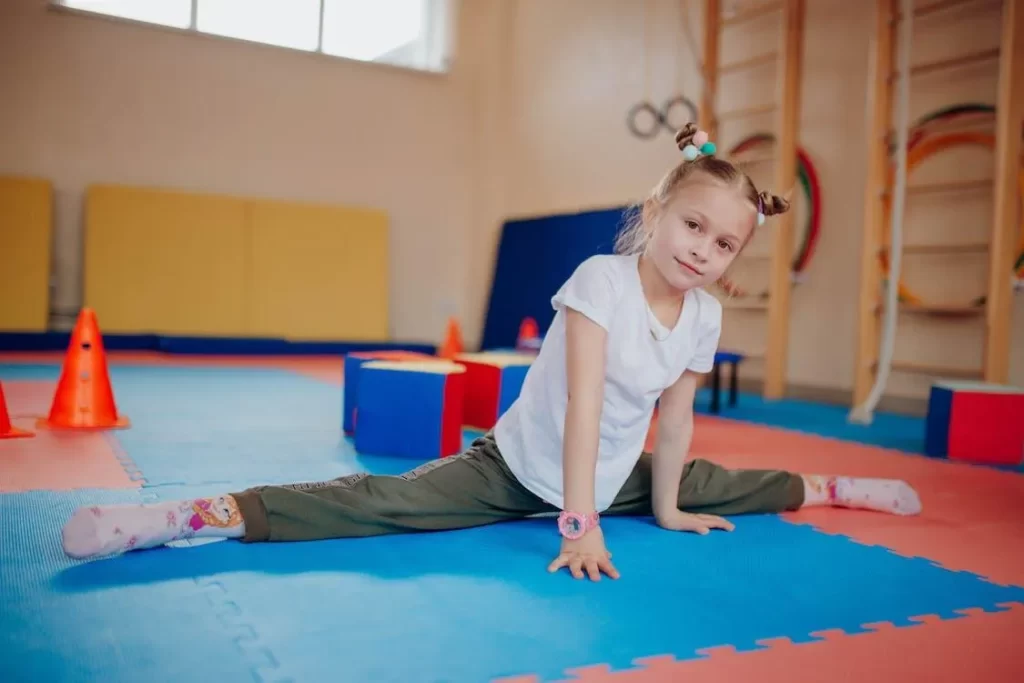The best flooring options for kindergarten
Kindergartens are spaces where children have fun, learn and express their creativity. The rooms should allow children to be free and the adults worry-free about the safety of kids and the upkeep of the area. Floors, walls, and furniture should be best suited to the needs of the users.
The choice of flooring material for a kindergarten depends on many factors. Here we list down four main criteria you may wish to consider –
- Durability
- Maintenance
- Safety
- Aesthetics

- Durability
Kindergartens see a lot of foot traffic. Also, it is impossible for the rooms to be free of dirt or spills. The material should be such that it is able to withstand high traffic, does not get damaged easily, and is long-lasting. Also, any material that does not require frequent re-coating should be preferred.
- Maintenance
Let’s accept it. Kids are messy! They will drop things, break them, scribble on floors, or even spill food. Instead of curtailing their free play, it is better to invest in a flooring material that is easy to clean and maintain.
- Safety
In a kindergarten children engage in activities involving a lot of play and free movement. Toddlers are in frequent contact with the floor, so it is essential that the material used is free of toxins and not harmful to their health.
Children are also prone to free falls and getting hurt. The flooring material should be such that it provides a softer landing, and cushions drops and falls.
- Aesthetics
Not just functionality, aesthetic appeal plays an important role in selecting the perfect flooring material. The flooring should be as appealing as the rest of the room.

Now, let us look at the most preferred flooring options for kindergartens.
Cork Wood

Cork flooring is a wonderful option as it combines the durability of laminate and the beauty of hardwood flooring. It gives away under pressure, so children find it a fun surface.
They are easy to maintain. Since cork is anti-static, dry sweeping or vacuuming is enough to remove dust particles, and any spills can be easily wiped.
Cork wood floors are naturally insulated against the cold.
It’s a naturally soft and squishy material and provides a moderate degree of cushion, thereby protecting children from accidents.
Another advantage of using cork wood flooring is with regards to sound. They prevent noise from travelling and hence work wonders in noisy kindergartens.
It is environmentally safe, free from toxins, and non-allergenic.
The main disadvantage comes from its soft surface. It is prone to damage and should be avoided in areas with high foot traffic or rough play zones. Spills can also reduce life span.
Vinyl

Vinyl is a water-resistant, spill-resistant, and stain-resistant flooring material. Being non-porous, it is highly resistant to moulds too, thus making it one of the most resistant flooring options.
It is also easy to install, clean, and maintain with regular cleansing agents.
Vinyl is also long-lasting and difficult to rip or tear.
Vinyl flooring is soft and children will not land on a hard surface in case of slips and falls. However, vinyl is known to emit trace amounts of toxic materials known as volatile organic compounds (VOCs). These VOCs can cause irritation to children with respiratory problems.
Rubber Floor Tiles
Vulcanized rubber is a natural, resilient, shock-absorbing flooring material that’s a good choice for kindergartens.
It comes in the form of tiles and is easy to lay, strong, and long-lasting. They also provide extra cushioning, thus providing a soft-landing surface.
Thick rubber tiles can even reduce noise levels.
Maintaining rubber tiles is not a challenge as all you need is a mop, mild detergent, and warm water.
The only disadvantage comes from its noticeable odour. Even though it is not harmful like VOCs, some children might be bothered by the smell.
Laminate

Laminate is a fantastic flooring material for kindergartens. It is similar in appearance to hardwood flooring but comes with a more affordable price tag.
Kindergarteners engage in a lot of free play and floor-level activities like drawing, colouring, clay modelling, etc. Laminate is resistant to dents, stains, and scratches. Thus, allowing kids to be kids. Free and messy!
Like all materials, laminate too has a few disadvantages. The surface becomes slippery when wet. Hence it is vital to quickly mop up any spills.
Also, low-grade laminate emits VOC. This can be avoided by selecting good quality certified products.
Cushioned PVC Floor Tiles
Made from recycled materials, Cushioned PVC Floor Tiles have excellent sound-dampening qualities. These tiles are an excellent choice for areas with high traffic. Since they have high cushioning, kids who stumble and fall will be safer.
Foam Tiles or Foam Mats

Foam tiles are perfect for play areas that are assigned for rough play or even gymnastics. They are latex-free, water-proof, and non-absorbent materials that are easy to lay, clean, and maintain.
In case of damage, there is no need to change the entire flooring. Replacing the respective pieces is fairly easy. Since no adhesive is used while installing these foam tiles, replacement and maintenance are quite easy.
Foam mats are a colourful latex-free material that is popularly used in kindergartens. They are also installed without the use of adhesives and hence are easy to maintain.
